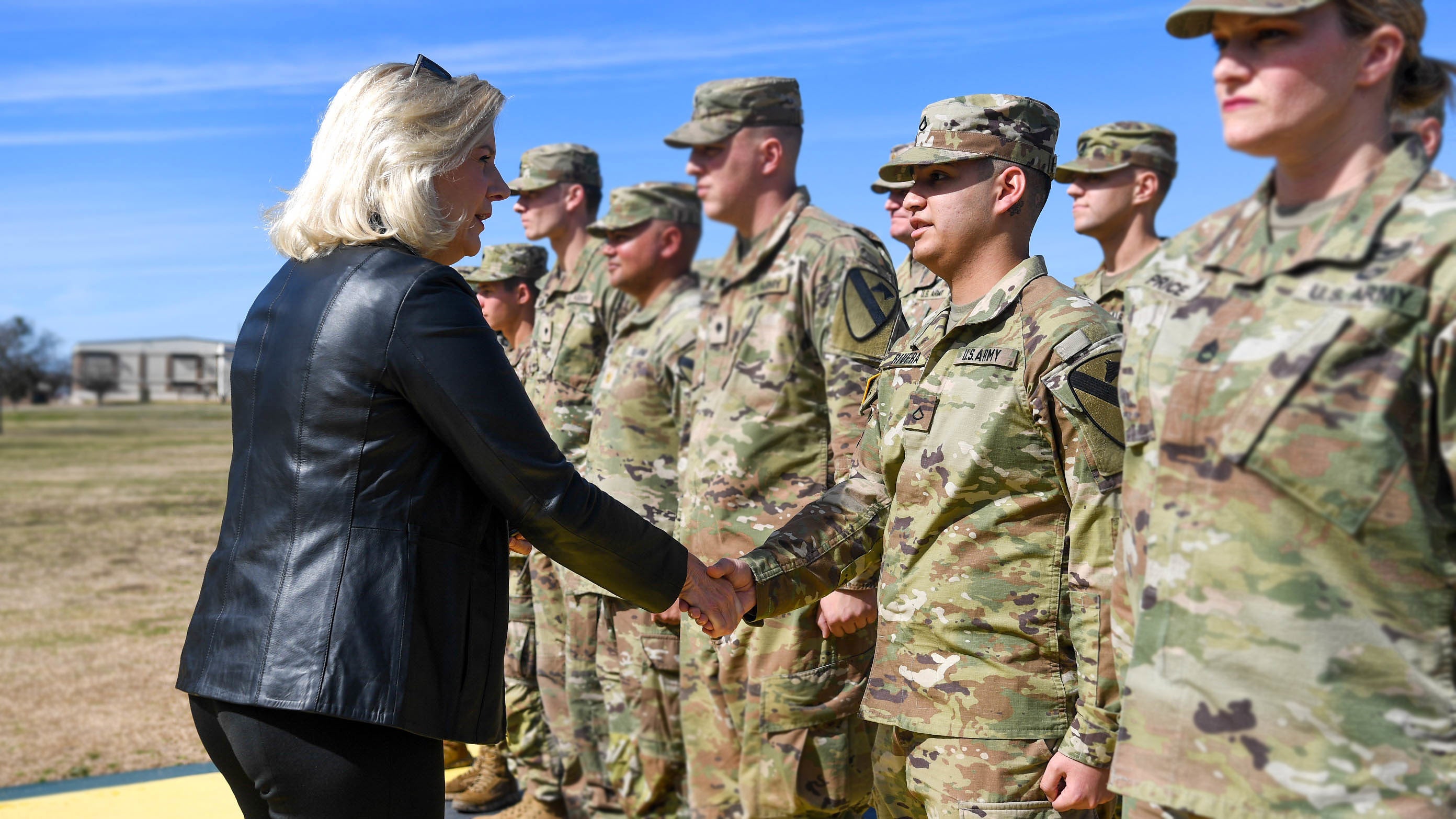Wormuth: Recruiting Shortfalls Straining Units
Wormuth: Recruiting Shortfalls Straining Units

Recruiting challenges are creating unit manning shortages, but Army leaders are optimistic that initiatives to boost enlistments will soon pay off.
With a goal to recruit 55,000 new soldiers and enlist 5,000 more into the delayed entry pool by the end of fiscal year 2024, Army leaders aim to begin relieving the strain on operational units.
Army Secretary Christine Wormuth acknowledged that many soldiers she’s spoken with “have very full plates and are doing the work of one-and-a-half to two soldiers.”
“We are recruiting at a higher rate than we were at this time last year … and doing the best that we can to be able to make sure that we’re being smart about how we’re manning units,” Wormuth told defense reporters Feb. 27 at a meeting hosted by George Washington University’s Project for Media and National Security.
Leaders are ensuring that “units that are on the hook to be part of the immediate response force are manned at a high level so they can have readiness, but there’s no doubt that it’s putting some strain on our soldiers,” she said.
Touting the success of the Future Soldier Preparatory Course, which gives recruits a chance to improve their test scores and physical fitness, Wormuth said the program is “expanding modestly” to fill that recruit pipeline.
The course was launched in August 2022 for recruits who scored between 21 and 30 on the Armed Services Vocational Aptitude Battery. At the end of the course, during which recruits have three chances to raise their test scores to 31 or higher, successful recruits are shipped to basic training and advanced individual training.
The expansion will permit recruits who score 16 to 20 on the Armed Services Vocational Aptitude Battery, the lowest allowable score, to go through the 90-day course at Fort Jackson, South Carolina.
If they do not raise their test scores to 31 or higher, they will be reassessed for service or discharged, said Lt. Col. Randy Ready, a spokesman for the Army Center for Initial Military Training.
“We’re opening it up a little bit to lower scores, and we think there might be as many as 3,000 candidates,” said Wormuth, who noted that more than 15,000 recruits had graduated from the course and shipped to units.
Other recruiting initiatives include elevating Army Recruiting Command from a two-star to a three-star command, new organizations for experimentation and new ideas, and creation of new MOSs for warrant officers and NCOs who will be professionally trained in the art of recruiting, a process that will be “a multiyear solution,” Wormuth said.
Army Chief of Staff Gen. Randy George said selecting the right people for the recruiting mission is critical. “I am knocking on wood. Things are getting a little bit better. We are focused on it,” George said.

